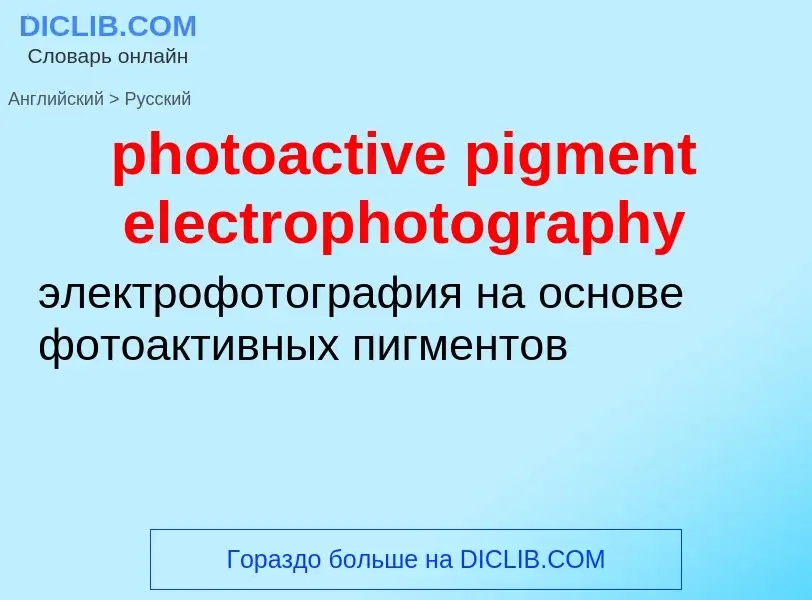ترجمة وتحليل الكلمات عن طريق الذكاء الاصطناعي ChatGPT
في هذه الصفحة يمكنك الحصول على تحليل مفصل لكلمة أو عبارة باستخدام أفضل تقنيات الذكاء الاصطناعي المتوفرة اليوم:
- كيف يتم استخدام الكلمة في اللغة
- تردد الكلمة
- ما إذا كانت الكلمة تستخدم في كثير من الأحيان في اللغة المنطوقة أو المكتوبة
- خيارات الترجمة إلى الروسية أو الإسبانية، على التوالي
- أمثلة على استخدام الكلمة (عدة عبارات مع الترجمة)
- أصل الكلمة
photoactive pigment electrophotography - ترجمة إلى الروسية
строительное дело
природный пигмент
تعريف
ويكيبيديا

A carbon print is a photographic print with an image consisting of pigmented gelatin, rather than of silver or other metallic particles suspended in a uniform layer of gelatin, as in typical black-and-white prints, or of chromogenic dyes, as in typical photographic color prints.
In the original version of the printing process, carbon tissue (a temporary support sheet coated with a layer of gelatin mixed with a pigment—originally carbon black, from which the name derives) is bathed in a potassium dichromate sensitizing solution, dried, then exposed to strong ultraviolet light through a photographic negative, hardening the gelatin in proportion to the amount of light reaching it. The tissue is then developed by treatment with warm water, which dissolves the unhardened gelatin. The resulting pigment image is physically transferred to a final support surface, either directly or indirectly. In an important early 20th century variation of the process, known as carbro (carbon-bromide) printing, contact with a conventional silver bromide paper print, rather than exposure to light, was used to selectively harden the gelatin. A wide variety of colored pigments can be used instead of carbon black.
The process can produce images of very high quality which are exceptionally resistant to fading and other deterioration. It was developed in the mid-19th century in response to concerns about the fading of early types of silver-based black-and-white prints, which was already becoming apparent within a relatively few years of their introduction.
The most recent development in the process was made by the American photographer Charles Berger in 1993 with the introduction of a non-toxic sensitizer that presented none of the health and safety hazards of the toxic (now EU-restricted) dichromate sensitizer.


